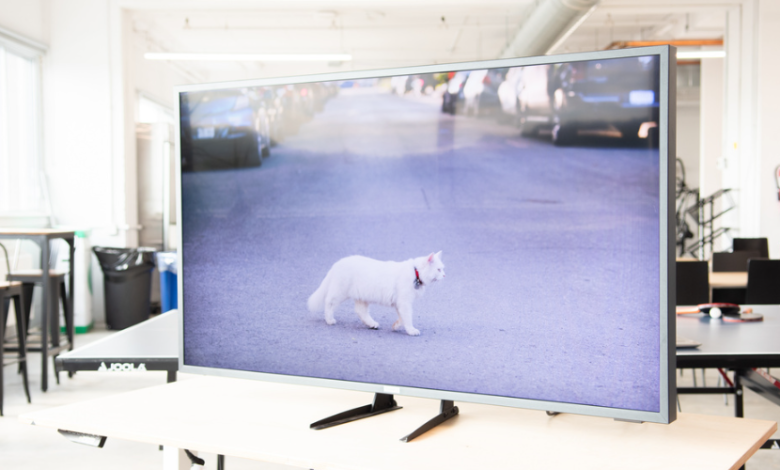High Brightness Display: The Ultimate Guide to Brighter and Clearer Visuals in 2025

Introduction to High Brightness Display Technology
In today’s technology-driven world, screen clarity and brightness are crucial for delivering exceptional visual experiences. Whether it’s an outdoor digital billboard, a marine control panel, or a smart vehicle dashboard, display brightness determines how clearly information is viewed under varying light conditions. The High Brightness Display stands as a breakthrough technology designed to overcome visibility challenges, ensuring crisp and vibrant images even under intense sunlight.
With rapid advancements in LED and LCD technologies, brightness levels that once peaked at 300 nits have skyrocketed beyond 2,500 nits. This evolution has redefined how businesses and industries communicate visually, bringing exceptional clarity, durability, and efficiency to every application.
What Is a High Brightness Display
A High Brightness Display (HBD) refers to a screen engineered to deliver higher luminance than standard displays. These panels typically exceed 1,000 nits of brightness, allowing them to remain perfectly readable in outdoor or high-glare environments. They are commonly used in applications such as digital signage, kiosks, ATMs, transportation systems, military controls, and marine navigation systems.
High brightness displays combine superior contrast ratios, color accuracy, and thermal management technologies to ensure continuous performance even in harsh lighting or weather conditions.
The Evolution of Display Brightness
Display technology has evolved remarkably over the last two decades. Early LCD screens offered limited brightness, often between 150–300 nits. The introduction of LED backlighting in the early 2000s transformed the landscape, enabling higher brightness levels and energy efficiency. The latest Mini-LED and Micro-LED innovations have further improved luminance, color fidelity, and lifespan, reaching peaks of over 5,000 nits in some premium models.
Today, high brightness displays are the gold standard for outdoor digital communication, industrial automation, and high-performance computing environments.
Importance of Brightness in Modern Screens
Brightness is one of the most vital performance metrics in any display. It not only enhances visual appeal but also impacts readability and user comfort. In outdoor environments, ambient sunlight can wash out images on standard screens, making them nearly invisible. A high brightness display ensures optimal visibility by countering glare and maintaining strong contrast.
In commercial environments, high brightness screens attract more attention, improving engagement in digital advertising and information display systems.
Understanding Display Brightness and Nits
Brightness in displays is measured in nits, which indicates how much light a screen emits per square meter. While most standard monitors offer 250–400 nits, high brightness displays start from 1,000 nits and go up to 5,000 nits or higher. This difference dramatically enhances outdoor readability, making them perfect for use in bright or unpredictable lighting conditions.
The higher the nit value, the more visible and dynamic the screen appears, even under direct sunlight. It also ensures better contrast, color precision, and user experience.
Key Features of High Brightness Displays
1. Sunlight Readability and Anti-Glare Technology
High brightness screens use anti-reflective coatings and optical bonding techniques to reduce surface reflection, ensuring excellent readability in sunlight. These displays maintain consistent performance across various environmental conditions.
2. Advanced Cooling and Power Efficiency
Modern high brightness displays integrate intelligent cooling systems and adaptive backlight control to balance brightness with power efficiency. Active and passive cooling prevent overheating, allowing for continuous 24/7 operation.
3. Superior Color and Contrast Performance
Enhanced color calibration and dynamic contrast ensure that images remain vibrant, sharp, and true-to-life even in extreme lighting environments.
Types of High Brightness Displays
LCD, LED, and OLED Displays
Among display technologies, LED-backlit LCDs dominate the high brightness market due to their durability and energy efficiency. OLEDs provide deeper blacks and higher contrast but are less suited for extreme outdoor brightness levels. Mini-LED and Micro-LED displays combine the best of both worlds, offering outstanding brightness and longevity.
Outdoor and Indoor High Brightness Displays
Outdoor displays are designed for rugged environments with water-resistant and dustproof casings (IP-rated). Indoor versions focus more on color precision and aesthetic appeal, ideal for retail spaces and information centers.
Touchscreen and Transparent High Brightness Panels
Recent innovations include interactive touchscreen and transparent high brightness panels, which are redefining user engagement in commercial and industrial settings.
Applications of High Brightness Displays
High brightness displays are used across a diverse range of industries.
Digital Signage and Advertising:
Outdoor billboards, transportation hubs, and retail storefronts rely on bright displays to capture public attention and deliver impactful messages day and night.
Automotive and Marine Systems:
Vehicle dashboards and marine displays require consistent readability in variable lighting conditions. High brightness technology ensures that drivers and operators can view data clearly under sunlight or at night.
Industrial and Military Applications:
Industrial equipment, control rooms, and defense systems use high brightness displays for mission-critical information that must remain visible under all conditions.
Healthcare and Aviation:
From medical imaging monitors to cockpit screens, brightness consistency is vital for accuracy and safety in these precision-dependent fields.
Advantages of High Brightness Displays
High brightness displays offer numerous advantages, making them indispensable in professional and commercial environments:
- Exceptional visibility in bright outdoor light
- Enhanced durability and temperature resistance
- Energy-efficient LED backlighting
- Long operational lifespan and reliability
- Better engagement in public advertising and information systems
- Advanced contrast ratios and color performance
Challenges and Considerations
Despite their benefits, high brightness displays come with certain challenges. Increased brightness often leads to higher power consumption and heat generation. Manufacturers address this with advanced cooling and adaptive brightness controls.
Another consideration is cost — these displays are more expensive due to their specialized components and durable construction. However, for industries requiring constant outdoor visibility, the investment is worthwhile.
How to Choose the Right High Brightness Display
Selecting the ideal display depends on the application. Factors such as brightness level (nits), screen size, resolution, operating temperature, and environmental resistance should guide your choice.
Leading brands like Samsung, LG, Dynascan, and NEC offer industry-standard high brightness displays with innovative features tailored to outdoor, automotive, and commercial use. Businesses can also opt for custom-built panels to meet specific brightness and enclosure requirements.
Innovations and Future Trends
The future of high brightness display technology lies in smarter, more energy-efficient designs. Mini-LED and Micro-LED technologies are pushing brightness and contrast boundaries while lowering energy consumption.
Emerging trends include adaptive brightness, AI-driven visual optimization, and IoT integration, enabling displays to automatically adjust to surrounding light and environmental conditions. These advancements ensure that high brightness displays remain central to the future of digital communication and automation.
FAQs About High Brightness Displays
High brightness displays are not limited to one industry—they’re becoming essential in every field where visibility and reliability are crucial. From outdoor advertising to critical operations, their ability to deliver bright, consistent performance makes them a lasting investment for modern businesses.
Conclusion: The Future Is Bright
The High Brightness Display represents a perfect blend of performance, durability, and innovation. Its ability to maintain readability in extreme lighting conditions has made it the cornerstone of outdoor visual technology. As industries continue to embrace digital transformation, the demand for high brightness solutions will only grow stronger.
In a world that never dims, the future of display technology is brighter than ever.





